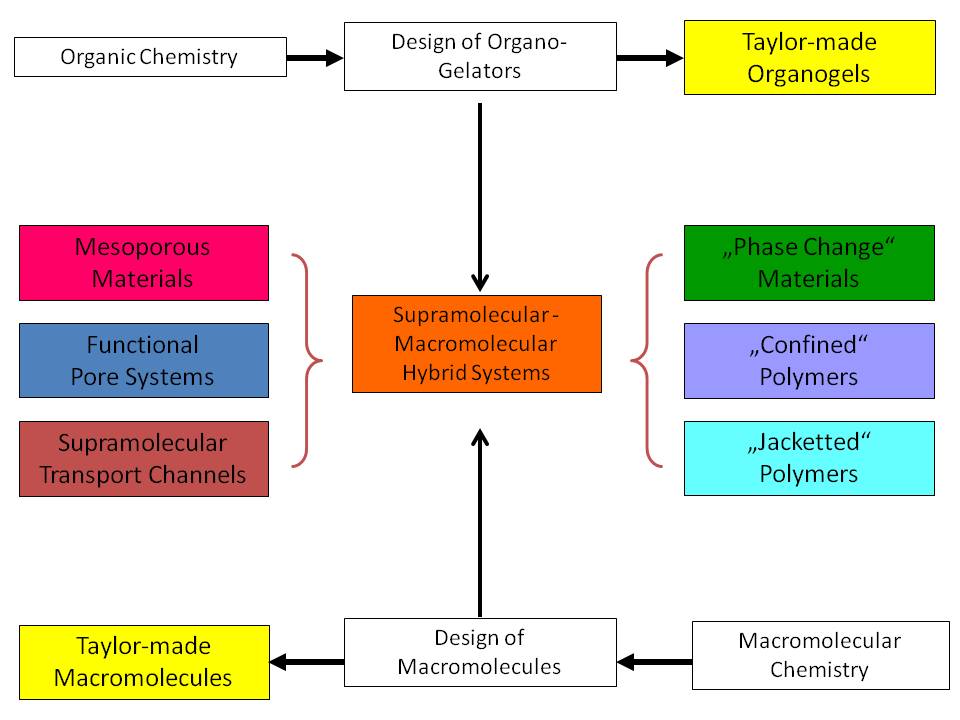Hauptinhalt
Topinformationen
Motivation and Aims
The size of the smallest structure which can industrially be manipulated is one measurement for the efficiency and productivity of a technology-based society. Starting with the 19th century a ‘millimeter’ technology was established. Highlights of precision mechanics at those days were e.g. watches, clocks and measurement devices. One may remember that Charles Babbage failed around 1850 to construct a mechanical computer because the mechanical parts could not be produced in large quantities with the required precision.
‘Microtechnology’ manipulating micro-meter sized objects and structures just evolved over the last 30 years, providing us with high precision mechanics, computers and information technology. Further advance will require to handle nano-meter ‘large’ objects and methods complementary to the well established lithographic techniques have to be developed.
OMC’s research aims for the combination of nanometer - sized, self organised structures of small molecules with the functionality and variability of macromolecular materials. The structural control of polymer systems in the mesoscopic regime will lead to a multitude of solutions and new applications.
For the chemistry of organic materials this implies to investigate the structure formation occurring by self-organisation of (macro)molecules. One intriguing aspect is the self-assembly of growth-limited supramolecular structures under non-equilibrium conditions and the challenges to apply the results of this research to problems of practical interest.
The research of the department is directed towards the development of ”Supramolecular/Macromolecularer Hybride Materials” that can be obtained by combination of (i) Taylor-made macromolecules and (ii) Taylor-made low molecular weight compounds exhibiting a high potential for self-organization processes (Figure 1). Hybride materials that combine molecular functionality, molecular well defined super structures as well as structural flexibility may help to establish a new ”Soft Nanotechnology” in the material sciences (cf. R. Jones, University of Sheffield).

Figure 1: Research subjects of the department Organic Materials Chemistry in relation to Supramolecular / Macromolecular Hybride Systems

